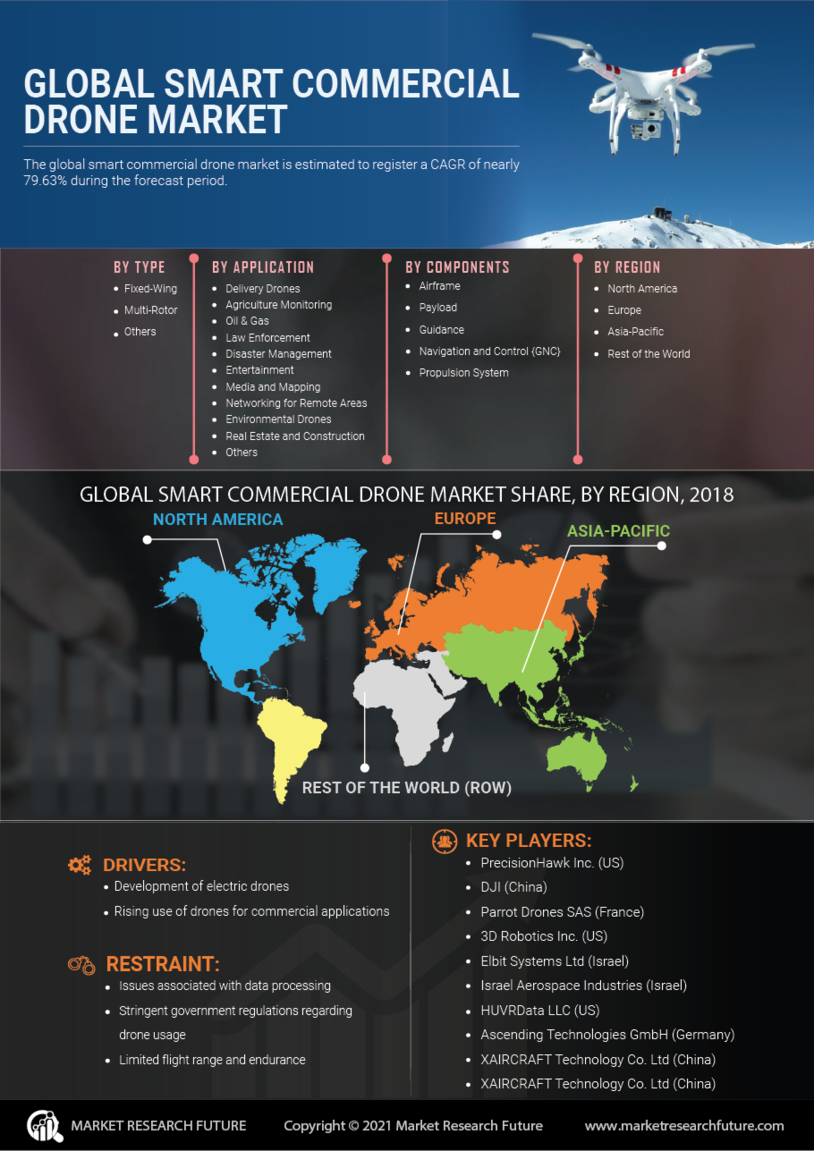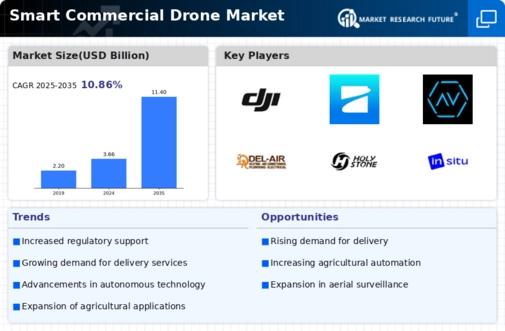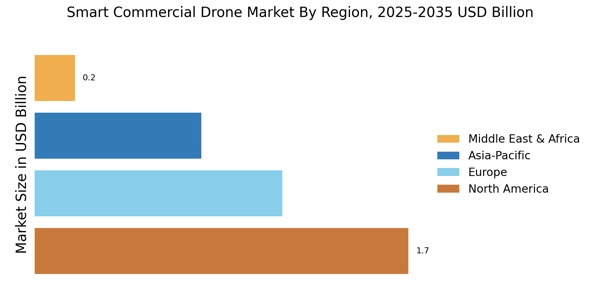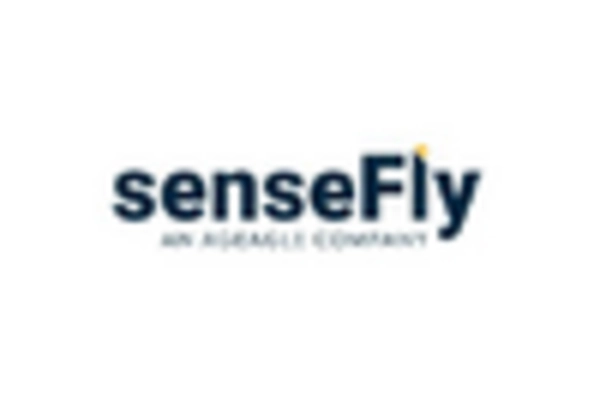The Smart Commercial Drone Market has seen remarkable growth in recent years, driven by advancements in technology and increasing applications across various sectors such as agriculture, construction, logistics, and surveillance. Key players in this market are continuously innovating to meet the evolving demands of businesses and consumers, resulting in fierce competition.
Factors such as regulatory changes, the proliferation of aerial data, and the surge in demand for drones equipped with artificial intelligence and robust functionalities are shaping the competitive landscape. In this dynamic environment, companies are focusing on enhancing their product offerings, expanding their geographical reach, and engaging in strategic partnerships to maintain a competitive edge.
The emergence of new entrants along with established leaders adds complexity to the market, necessitating a keen understanding of competitive strategies to navigate successfully.
DJI has established itself as a dominant player in the Smart Commercial Drone Market, leveraging its extensive experience and deep expertise in drone manufacturing. The company is recognized for its cutting-edge technology and user-friendly designs, which have significantly appealed to both commercial and recreational drone users.
DJIs commitment to innovation is reflected in its consistent rollout of high-performance products tailored to the specific needs of various industries. Furthermore, the company enjoys a strong market presence and brand recognition, benefiting from a large customer base and a comprehensive ecosystem that includes software and accessories.
These strengths enable DJI to maintain its position as a leader while also driving the entire market forward through its commitment to research and development, allowing it to capture diverse market segments.
Skydio has carved out a niche within the Smart Commercial Drone Market, particularly known for its advanced autonomous drone technology. The company's focus on artificial intelligence and machine learning sets it apart, offering innovative solutions that enhance operational efficiency and safety for commercial applications.
Skydio's drones are designed to be user-friendly and require minimal operator intervention, making them highly appealing to industries such as construction, inspection, and public safety. The company's ability to navigate complex environments autonomously positions it well in a market that is increasingly demanding sophisticated aerial solutions.
Skydio's strategic partnerships and collaborations further bolster its competitive standing, enabling the company to expand its reach and enhance its offerings within the smart commercial drone space.


















Leave a Comment